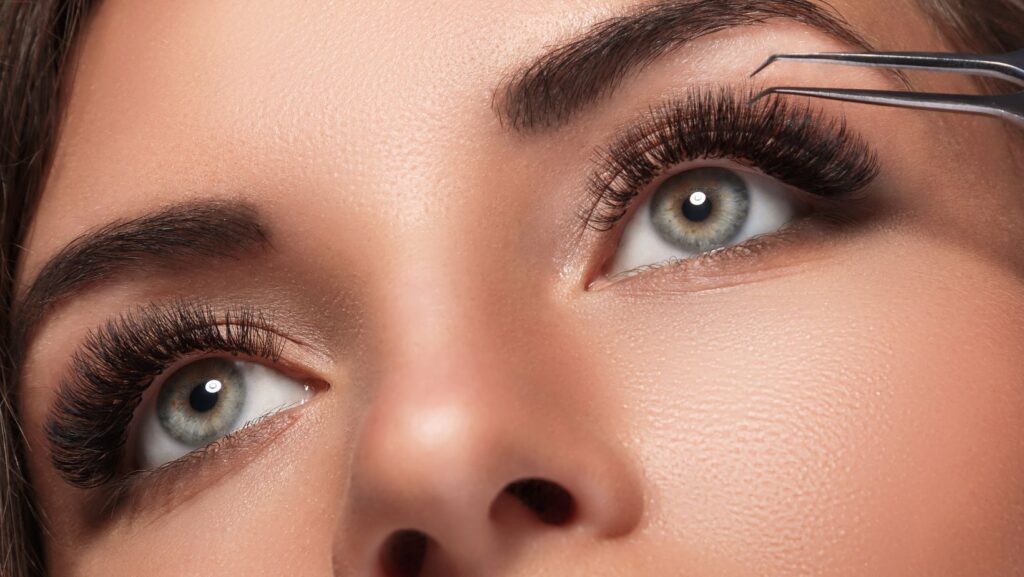Choosing the right extension length can make a big difference for those with petite face shapes. Longer lengths may overwhelm smaller features, while shorter or mid-length extensions can create balance and highlight natural proportions. The most flattering choice for petite face shapes is usually a length that frames the face without adding excess weight or volume.
A petite face benefits from extensions that fall around the shoulders or just below, as this length enhances facial structure without hiding it. Extensions that are too long can draw attention away from delicate features, while carefully chosen lengths help maintain harmony between hair and face shape.
By focusing on proportion and balance, anyone with a smaller face shape can achieve a natural, polished look that feels effortless. The right length not only complements facial features but also makes styling easier and more manageable.
Key Takeaways
- Face shape plays a key role in choosing extension length
- Mid-length styles often suit smaller features best
- Balanced proportions create a natural, flattering look
How Face Shape Influences Extension Length Choices
The proportions of a person’s face shape affect how well different hair extension lengths frame their features. Choosing the right length helps create balance, highlight natural structure, and maintain a look that feels proportional to a petite face.
Identifying Petite Face Shapes
A petite face shape typically has smaller dimensions, with delicate features that can appear overwhelmed by very long or heavy extensions. The goal is to select lengths that complement rather than overshadow these proportions. Common petite face shapes include oval, round, square, heart, and diamond-shaped. Each has unique characteristics:
- Oval: Balanced width and length, slightly narrower at the jaw.
- Round: Equal width and length, fuller cheeks.
- Square: Strong jawline with angular edges.
- Heart: Wider forehead, narrow chin.
- Diamond: Narrow forehead and chin with wider cheekbones.
Recognizing these shapes makes it easier to determine which extension lengths will enhance rather than compete with natural structure.
Extension Length Recommendations by Face Shape
For oval faces, most lengths work well because of balanced proportions. However, keeping extensions between 16–20 inches often flatters petite features without appearing heavy. This balance shifts with other face shapes, where the right length can change how features are framed. Some find they reach natural volume with 22-inch hair, while mid-length styles create a lighter, more subtle outline. Comparing these lengths side by side shows how each one affects proportion and movement. The most suitable option usually depends on whether you want softness, balance, or added length in your overall look.
A square face looks softer with extensions that fall below the shoulders, ideally 18–20 inches, paired with layers that reduce angularity. Heart-shaped faces often pair well with medium to long extensions, around 18–22 inches, to balance the width of the forehead and add fullness near the chin. For a diamond-shaped face, lengths of 16–20 inches work well to soften cheekbone width while maintaining proportion.
Blending Extensions With Natural Hair
Proper blending is essential for petite face shapes, as harsh transitions can draw unnecessary attention to facial proportions. Extensions should match both the texture and density of the natural hair to avoid a mismatched look.
Layering extensions helps create a seamless flow, especially when adjusting for shorter natural hair. Stylists often trim and shape the extensions after application to ensure they frame the face appropriately. Color matching also plays a role. Using highlights or lowlights within the extensions can soften lines and make the added length appear more natural. This keeps the overall look balanced and proportional to the wearer’s face shape.
Selecting the Best Extension Length for Petite Features
Choosing the right hair extension length for petite face shapes requires attention to proportion, styling, and daily upkeep. Extensions that complement smaller features should enhance natural hair without overwhelming facial structure or adding unnecessary bulk.
Styling Tips for a Natural Look
Styling should focus on maintaining harmony between natural hair and extensions. Straight, blunt ends can look harsh on petite faces, while subtle waves or light curls soften the overall appearance.

Using face-framing layers helps highlight cheekbones and jawlines. Extensions cut at angles around the face avoid a flat or heavy effect. A stylist can trim extensions after installation to ensure they match the client’s natural growth pattern.
Balancing Proportions for Smaller Frames
For those with petite features, extremely long extensions can appear heavy and disproportionate. Hair that extends far past the mid-back may draw attention away from the face and shorten the appearance of the neck and shoulders.
A length between 14 to 18 inches often provides balance. This range frames the face without overpowering smaller bone structure. Extensions that fall around the collarbone or just below the chest tend to create a softer, more proportional look. Layering also plays an important role. Blended layers prevent a blocky finish and help extensions move naturally with shorter natural hair. This creates a seamless transition that enhances facial definition instead of hiding it.
Conclusion
Choosing the right extension length for petite face shapes comes down to balance and proportion. Shorter to medium lengths often frame the face more naturally, while very long extensions can overwhelm smaller features. Lifestyle and styling habits also matter. Those with active routines may find manageable lengths like 16–20 inches more practical, while others may prefer slightly longer styles for added versatility.
By considering face shape, daily needs, and personal style, individuals can select an extension length that enhances their features without overshadowing them. The goal is a seamless look that feels both flattering and easy to maintain.
Bob Duncan is the lead writer and partner on ConversationsWithBianca.com. A passionate parent, he’s always excited to dive into the conversation about anything from parenting, food & drink, travel, to gifts & more!
